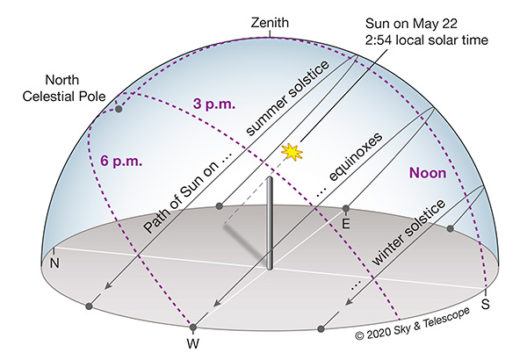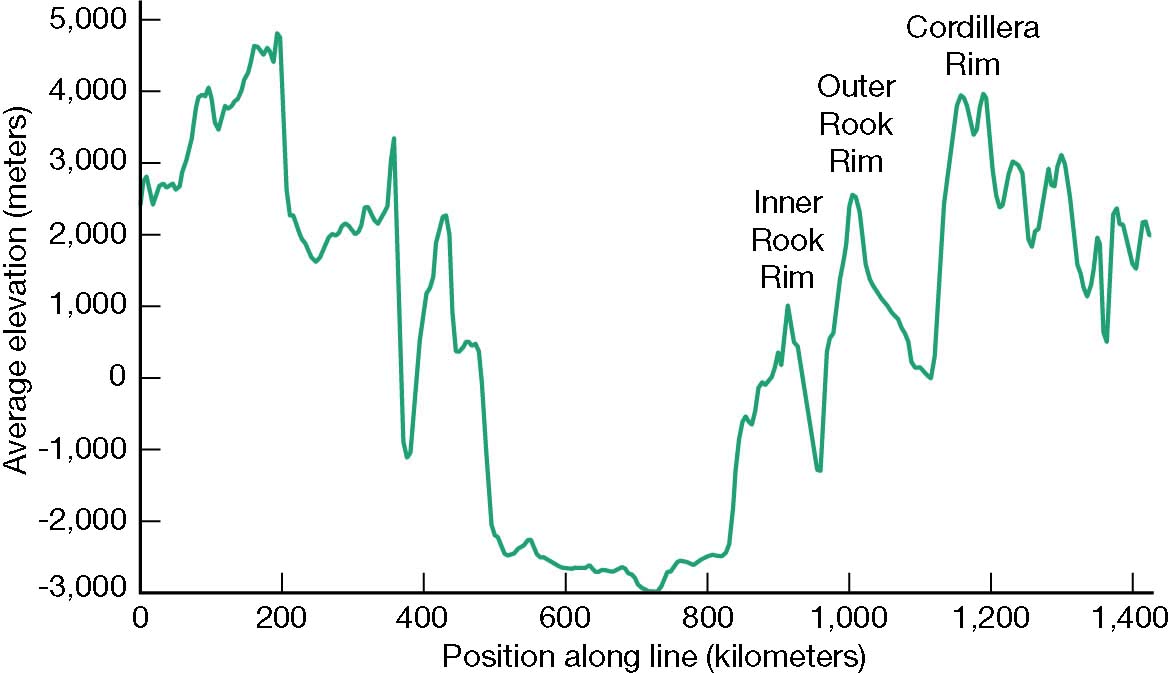The editors of Sky & Telescope make every effort to provide accurate information, but errors do sometimes slip through. We correct all mistakes online as well as printing corrections in the magazine. So if you see something questionable in the magazine, check below to see if it's a known problem.
This article lists all known errors in issues of Sky & Telescope for 2020. See also the errata listings for other years.
January 2020
Page 28: The sundial diagram illustrating the Sun's position at various times and dates incorrectly showed the hour lines radiating from the zenith. They actually radiate from the north celestial pole.

Page 53: J. Wesley Simpson photographed Kordylewski's clouds aboard NASA's Convair 990 laboratory aircraft in 1966, not aboard its Kuiper Airborne Observatory in 1967.
March 2020
Page 60: A six-minute error in determining Greenwich Time would lead to a navigator's error of 90 nautical miles, not six, when sailing near the equator.
Page 61: When computing longitude, one should subtract Greenwich Time from local time and multiply by 15, not divide.
April 2020
Page 33: In the sidebar of "A Curious Straight Ray," under "Making simplifications," the editors oversimplified, and c is missing from the numerator of the first equation's right side. It reappears, though, in the solutions beneath.
Page 53: On the elevation graph of the Orientale basin the average elevation is in meters not kilometers. See the correct graph below.

Gregg Dinderman / S&T
May 2020
Page 17: On asteroid Ryugu, the unexpectedly large crater left by Hayabusa 2's projectile was a result of the rocks' low density and the asteroid's weak gravity.
June 2020
Page 48: In “A Martian Sneak Peek,” the acronym ALPO stands for the Association of Lunar and Planetary Observers alpo-astronomy.org.
July 2020
Page 45: In “Ophiuchus Treasures,” the correct number of Messier globular clusters in Sagittarius is seven.
Page 49: In the "Path of Pluto" chart, SAO 188414 was mislabeled as SAO 1888414.
August 2020
Page 55: In the red-plate mosaic depicting V Aquilae, the bright star labeled η (right) is 12 Aquilae.
October 2020
Page 7: In this magazine’s Astronomical Scrapbook, “The Field of Mizar and Alcor” (S&T: Apr. 1957, p. 265), the star that wasn’t a planet should have been called Sidus Ludovicianum or Stella Ludoviciana.
Page 40: In “Observing Geosat Flares,” the correct direction of travel of the anti-solar point at night is east to west.
Page 47: “Mars at its Most Magnificent” should state that asteroid 8 Flora will be 130,000,000 km (80,778,255 miles) from Earth on October 31st.
Page 47: The Moon's closest perigee this year was on April 7th at 17:59 UT.
November 2020
Page 53: The label to the right of the “Odd number of reflections” image of Mars in “Tips for Planetary Observers” should say East.
Page 58: The portrait of Francesco de Vico in “The Strange Case of Comet Biela” depicts an Italian cleric of the same name who lived from 1660 to 1735. The image on page 7 of the July 2021 issue shows the correct Francesco de Vico (1805–48).
December 2020
Page 18: Phaethon comes closer to the Sun than any other named asteroid.
Page 41: The winter solstice started at 2:02 a.m. PST on December 21st.
Page 57: The review of Luna Cognita should have stated that the book’s Figure 6.3, and not Figure 6.1, should show celestial east on the left.
 1
1

Comments
Acugnini
December 29, 2020 at 11:13 am
In T. Dobbins' "Tips for Planetary Observers" (S&T, November 2020), the illustration on p.53 is incorrectly labelled. The left-hand globe correctly portrays the 180°-rotated telescopic view of Mars with an "Even number of reflections," since the Sinus Meridianii would have its large "head" at the east end (as seen in the sky from Earth) of the Sinus Sabaeus. However, although the right-hand globe correctly portrays the telescopic view with an "Odd number of reflections," the label "West" is incorrect, and should say "East," since the Sinus Meridianii is always at the east end, regardless of any rotations or inversions.
You must be logged in to post a comment.
You must be logged in to post a comment.